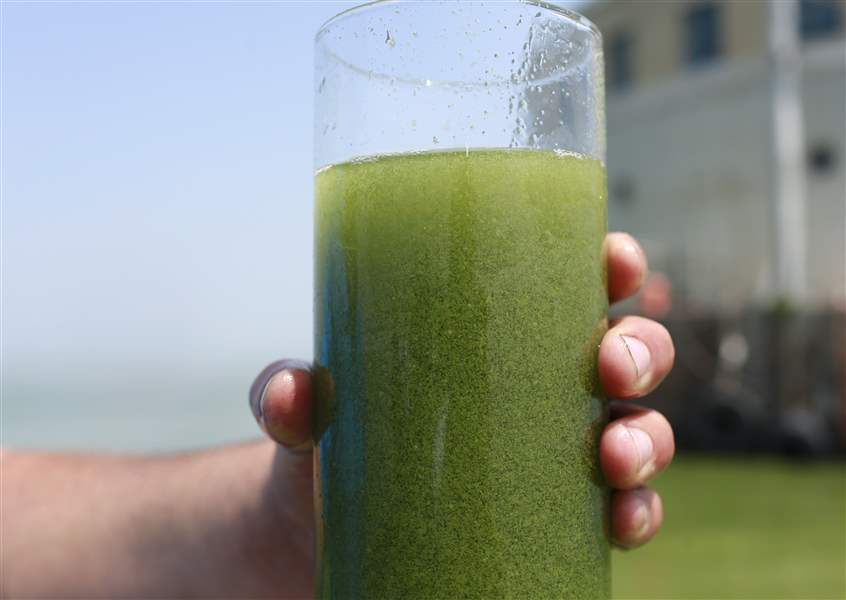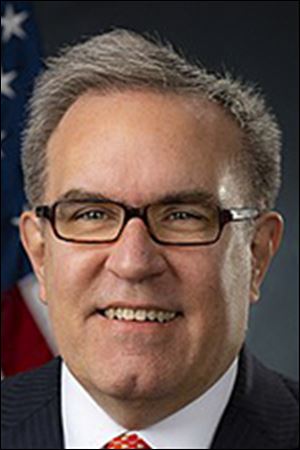
Saving Great Lakes fund a start
9/6/2018

In this Aug. 3, 2014 photo, a sample glass of Lake Erie water is photographed near the City of Toledo water intake crib, in Lake Erie, about 2.5 miles off the shore of Curtice, Ohio.
ASSOCIATED PRESS

Wheeler
It is reassuring news that Andrew Wheeler, the new administrator for the U.S. Environmental Protection Agency, supports the Great Lakes Restoration Initiative and its $300 million annual budget.
Mr. Wheeler, while on a recent tour in southeast Michigan, told Blade reporter Tom Henry that the Great Lakes fund obviously has strong bipartisan support from Congress and that the Trump Administration’s annual efforts to eliminate or gut the program by more than 90 percent are a thing of the past.
Preserving the $300 million annual fund is important to restoring health to the Great Lakes. But it’s only part of the solution.
Mandatory measures for limiting phosphorus and manure are necessary steps, as evidenced by the failure so far of voluntary restrictions having any effect.
The lake is fouled every summer by phosphorus and manure washing off farm fields into the Maumee River, covering the western end of the lake in a green carpet of algae and forcing water systems to take extraordinary steps to keep toxic pollution out of our drinking water. The Ohio Environmental Protection Agency’s own data show that the Maumee watershed is by far the largest source of phosphorus and nitrogen going into Lake Erie, and about 90 percent of the phosphorus and nitrogen nonpoint sources, which are mostly farms.
The Kasich administration has made some tentative steps toward encouraging farm and stockyard operations to change the way they apply fertilizer and dispose of manure. But the pace is much too slow. The Kasich administration’s own report this year revealed voluntary efforts in the last five years to reduce the pollution flowing into the Maumee River have had no measurable effect.
Lake Erie cleanup activists have filed suit in federal court to get the U.S. EPA to implement the same environmental protections that made a difference for Chesapeake Bay, a program called total maximum daily load (TMDL). A TMDL program sets limits on how much pollution the lake can stand and then limits application of pollutants accordingly.
Mr. Wheeler seems to have a sense of the threat to Lake Erie.
He should set his agency on a path of conducting a study of the exact sources of agricultural pollution washing into the Maumee River on its way to Lake Erie and then follow that up with mandatory restrictions.